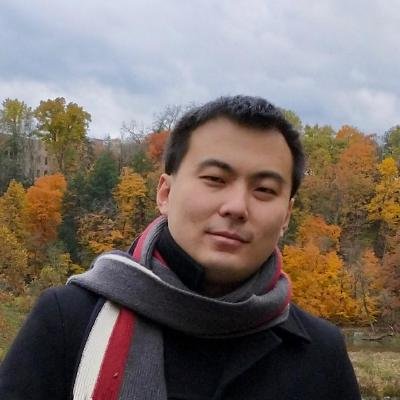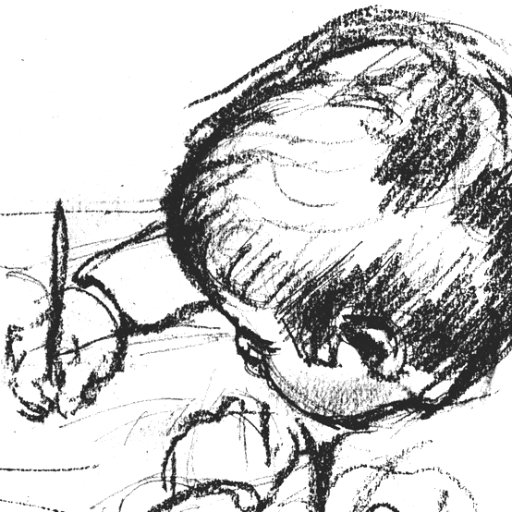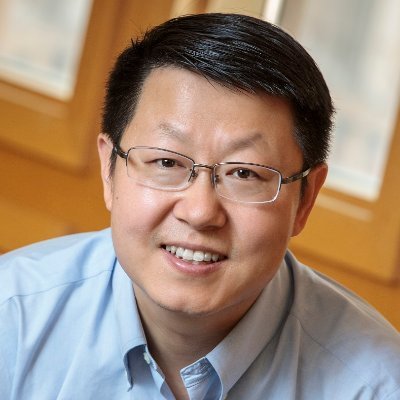
Tianyu Wang
@TianYuWang2020
Followers
247
Following
377
Media
3
Statuses
40
Assistant Professor at Boston University Photonics × AI A good twitter citizen who primarily retweets interesting, intelligent, and beautiful contents
Joined August 2020
At Lightmatter, we're not just connecting 1 million XPU datacenters together using light. We're committed to ensuring that computational progress continues, even when Moore's Law and Dennard Scaling are gone. Our publication in @Nature highlights one possible path for
lightmatter.co
Lightmatter’s breakthrough in photonic AI processing transforms AI acceleration, offering unmatched speed and energy efficiency for next-gen computing!
1
7
42
What a 10-year journal with MICrONS!
Excited and proud to see all the MICrONS papers out in @NaturePortfolio today, including NEURD - a tool developed in our lab to help with automated proofreading and analysis of large EM connectomes. Check out the beautiful landing page @Nature:
0
0
1
Image deeper, wider, faster with three-photon microscopy, enabled by a bunch of new optics tricks: https://t.co/8GtlZUSAKi. Another work finally published towards the end of 2024. Miss the brainstorming sessions with Aaron, who created this amazing fine piece of instrument.
0
0
6
What is the minimum optical energy needed for classifying an image? Here we show it is possible to score high on deterministic ML tasks using single-photon detectors as stochastic neurons. Kudos to @ShiYuanMa1 for renewing the lower bound of optical machine learning energy!
Our work on quantum-limited stochastic optical neural networks using just ~1 photon per neuron activation, described in https://t.co/6FWI31YYgt when we released a preprint, is out in final form now in Nature Communications:
0
0
5
Reposting a nice post about Hopfield Neural Networks
Hopfield networks are recurrent networks minimizing an Ising-type energy parameterized by its weights. Learning weights means encoding patterns of +1/-1 as local minimizers. https://t.co/mWM4f5HK7R
0
0
1
The Lake Como School of Advanced Studies on Machine Learning Photonics (MLPH) will take place on 2-6 September 2024! Check the program online: https://t.co/M1eWxfUom2 PhD students and postdocs are encouraged to apply: application deadline is June 15, 2024.
mlph2024.lakecomoschool.org
Machine Learning Photonics 2-6 September 2024 Bio-inspired (neuromorphic) methodologies, machine learning algorithms and new computational concepts are emerging as novel...
0
8
25
*How can you you change the design of a photonic chip, such as a photonic neural-network processor, without needing to go back to a foundry to get another version fabricated?* 1/
4
28
108
I feel extremely lucky, and I am grateful to @cziscience for their support on making novel light sources to push the frontier of deep-tissue imaging.
We’re excited to welcome new imaging grantees! 9 new Deep Tissue Imaging projects will drive development of imaging technology focused on obtaining cellular resolution readouts within complex living organisms. Learn about the projects
5
1
20
Glad to host Shi-Yuan Ma of Cornell University for an OQE seminar, titled "Quantum-limited Stochastic Optical Neural Networks Operating at a Few Quanta per Activation". https://t.co/41qyImVEhH
0
5
12
Tried and tested to be true!
One thing I haven't seen much talk about is how GPT-4v largely solves the longstanding OCR problem of math->LaTeX. I gave GPT-4v a page from one of my old physics psets and it basically nails it. From now on, no one should ever have to type out a big equation in LaTeX again (!)
0
1
6
I’m #hiring. Multiple post-doc positions in Silicon photonics, OCT imaging, and signal processing/embedded systems. Know anyone who might be interested?
1
7
24
We are looking for an enthusiastic PhD student or PostDoc to develop machine learning tools for neuroscience (digital twins) to explore the link between visual processing and behavior. If you're interested please send your CV to sinz@uni-goettingen.de. Please retweet!
0
21
38
Best science video watched in a while: You may have heard about Lorenz attractors, but have you seen other chaotic attractors? Check out this pleasant video for examples:
0
1
6
2023 Annual Photonics Symposium @ Boston University Photonics Center on Nov 30 | In-person events | Registration is free: https://t.co/AKzwxmEPkW
0
0
7
*What more can neuromorphic computing learn from neuroscience?* We were asked to write an opinion piece for the journal Neuron and took the opportunity to propose some questions to the neuroscience community: https://t.co/5aBcLWrXTJ 1/4
2
23
66
Other different perspectives and comments on the work: https://t.co/6ePhkyv5No
https://t.co/Oc9MP0OdCZ
https://t.co/dJ433Oe4CN
Digital images are poor replicas of optical images, i.e. patterns of photons. What if machines sensed the world by analyzing not digital images, but optical images? This is what we’ve recently done. IMO, it may change how machines see the world. https://t.co/vQFo4VrhfY 1/10
0
0
2
We expect to see this technology being applied to high-throughput & low-latency biomedical assays (flow cytometry), ultra-fast closed-loop pattern recognition and tracking (combustion and plasma control), and low-power event-based edge devices (deep-space exploration). 5/5
1
0
2
These ONNs can directly process broadband incoherent light reflected from physical objects in a single shot, and can perform nonlinear operations on the images in a programmable way, just like how you load different digital neural networks for different tasks. 4/5
1
0
2
Our optical-neural-network (ONN) smart sensor solves the problem by using an ONN to extract the information within the optical domain (i.e., even before the signals are converted to digital electrical signals.). 3/5
1
0
2













